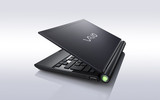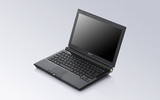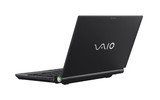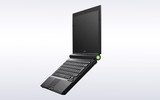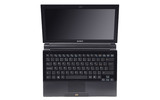Sony Vaio VGN-TZ31VN
Specifications
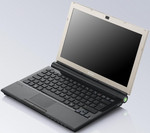
Price comparison
Average of 1 scores (from 1 reviews)
Reviews for the Sony Vaio VGN-TZ31VN
Source: Techradar
 Archive.org version
Archive.org versionThe Sony VAIO VGN-TZ31VN/R (£1799 inc. VAT) is one of the slimmest and lightest laptops around. While pure power is below average, its feature-packed specification is outstanding for such a small laptop, making it a great choice for a life on the move. The 1.3kg chassis is truly ultraportable, so you'll barely notice the weight when travelling. Build quality is excellent, but the thin screen panel is more fragile than its rivals. The 369-minute battery life helps add to the impressive mobility. The keyboard takes a unique approach. All the keys protrude individually though holes in the casing, which prevents too much detritus falling between them.
4 von 5, Verarbeitung ausgezeichnet, Ausstattung sehr gut, Mobilität gut, Leistung schlecht
Single Review, online available, Short, Date: 04/22/2008
Rating: Total score: 80% performance: 40% features: 90% mobility: 80% workmanship: 95%
Comment
Intel Graphics Media Accelerator (GMA) 950: Intel Graphics Media Accelerator 950 is an integrated (onboard) graphic chip on Mobile Intel 945GM chipset. It is a faster clocked version of the GMA 900 and supports no hardware T&L (Transform & Lightning) accelleration (which is required for some games).
These graphics cards are not suited for Windows 3D games. Office and Internet surfing however is possible.
» Further information can be found in our Comparison of Mobile Graphics Cards and the corresponding Benchmark List.
Intel Core 2 Duo: This is the Core Duo and Core Solo successor with a longer pipeline and 5-20% more speed without more power consumption. As an addition to the Core Duo design there exists a fourth decoder, an amplified SSE-unit and an additional arithmetical logical unit (ALU).
The Core 2 Duo for laptops is identical to the desktop Core 2 Duo processors but the notebook-processors work with lower voltages (0.95 to 1188 Volt) and a lower Frontside bus clock (1066 vs 667 MHz). The performance of equally clocked notebooks is 20-25% lower than Desktop PCs because of the lower Frontside bus clock and the slower hard disks.
U7700: » Further information can be found in our Comparison of Mobile Processsors.












